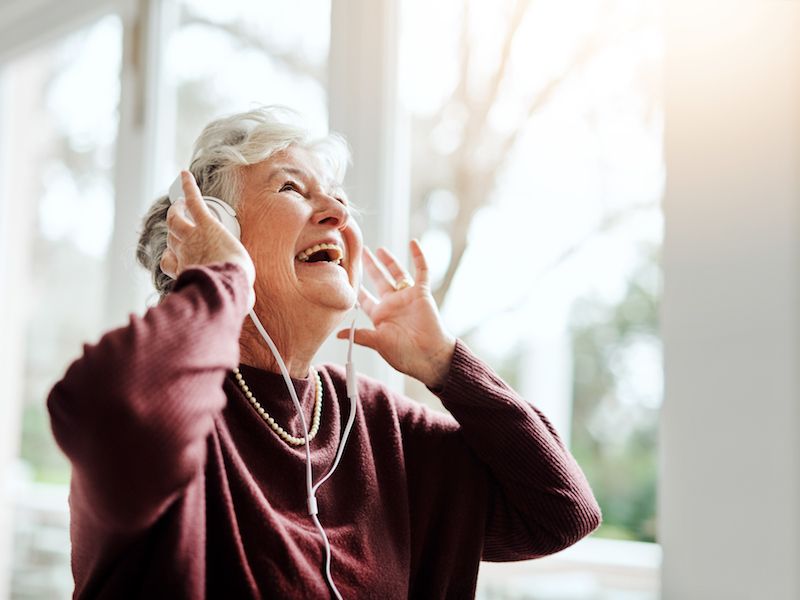
Individuals who work in loud surroundings such as construction sites or at heavy metal concerts are not the only ones affected by noise related hearing loss. Leisure related noise exposure can be just as dangerous as work related noise exposure. What type of exposure are we discussing? Loud sounds heard through headphones, whether it’s gaming, streaming video, music, or even an audiobook with the volume cranked up.
You may not realize your smartphone or tablet can go that loud. But these devices can attain sustained volumes of over 105 dB, which is close to the ordinary human threshold for pain. This is the volume at which noise begins to literally hurt your ears. So what’s the solution for safeguarding your hearing against volume related damage.
It’s important here to consider the volume. An easy shorthand that’s widely suggested is the 60/60 rule: Listen with the volume at no more than 60% for 60 minutes or less at a stretch (because how long you listen for matters, too).
Make a Setting on Your Hearing Aids For Music
If you have hearing aids, you’re likely streaming your device directly to your hearing aids, so make sure the volume is not too high or that you’re not attempting to drown out other sounds with your music. Additionally, ask us about how to best listen to music. Hearing aids aren’t designed to increase the quality of music like they do with voices so if really like music, you might have discovered this. We might be able to make adjustments to minimize feedback and noise while maximizing some frequency ranges to better the quality of sound when listening to music.
Picking out Headphones
If you don’t wear hearing aids, there are a lot of choices for shopping for headphones. There are a few things to consider, although it’s largely a matter of personal choice.
Headphones That go Over The Ears
While the foam-covered earpieces that came with your old Walkman are generally a thing of the past, over-the-ear headphones have made a comeback. Often shockingly expensive, they feature a large variety of color options and celebrity endorsements, and of course, exceptional sound quality. And these headphones go over the whole ear limiting out noise, unlike those old foam ones.
Conventional perception is that these are less dangerous than in-ear headphones because the source of the sound is further away from your eardrum. But the truth is they’re frequently capable of much louder volume than the smaller kind, the speakers are much larger. Also, noise-canceling will probably help you ignore the crying baby on your flight, but in other circumstances, it can block sounds you need to hear (such as a car honking). Having said that, because they block out outside sound, you can typically reduce the volume of what you’re listening to so it’s not loud enough to harm your hearing.
Earbuds
The normal earbuds that come with devices such as iPhones are known for their poor quality of sound, yet many people still use them because hey, they were included with the phone. Plus, with newer versions that don’t have a headphone jack, staying with Apple’s earbuds can just be easier.
Earbuds also don’t cancel out noise so the downside is, you tend to crank up the sound level. Once again,, though it’s frequently said that earbuds are problematic because you put them into your ear so their speakers are extremely close to your eardrum, volume is really the biggest problem.
Isolating or Occluding Earbuds
A lot of people choose earbuds with a rounded, rubbery tip both because they’re more comfy than standard earbuds and more effective at stopping outside sounds. A seal that blocks outside sound from entering is formed by the rubber tip which conforms to the shape of the ear. Not to sound like a broken record, but these have the same disadvantages as the other two (volume is the main problem), as well as carrying the same caution as over-the-ear headphones (they can block out warning sounds). And if you wear hearing aids, obviously these won’t work for you.
A number of pairs will probably have to be evaluated before you find headphones that meet your specifications. Depending on what you’re most often using them for talking on the phone, say, as opposed to listening to music, you’ll have different acoustic requirements. Enjoying your tunes at a healthy volume and finding headphones that help you do that is essential.
Don’t Cut Corners When it Comes to Your Hearing
Is it Safe, How Can I be Sure? There’s an app for that…If you have a smartphone, you can download the National Institute for Occupational Safety and Health’s free Sound Level Meter app. You can get different apps, but research has discovered that the dependability of these other apps is hit-and-miss (also, for unknown reasons, Android-based apps have proven less precise). That prompted NIOSH to create an app of their own. You can measure outside sounds with the app, but sounds coming from your device’s speakers can be measured too, in other words, the actual volume of what’s being sent to your ears. You have to do a little work, but taking these kinds of protective measures can help safeguard your ears.
